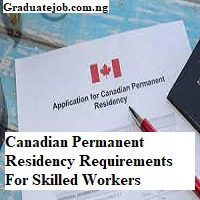Curious about protecting your home from earthquakes? Then you are in the right place. Look no further than State Farm Earthquake Insurance.
This comprehensive guide covers everything you need to know about State Farm’s earthquake insurance, its coverage options, benefits, and limitations.
Discover how this coverage can safeguard your home and assets if an earthquake occurs. Let’s jump in.
READ MORE: Veterans Life Insurance: What You Need to Know
How does earthquake insurance works?
Earthquake insurance operates as a specific sort of property insurance that offers coverage for damages and losses caused by earthquakes.
Policyholders pay a fee for this insurance, and in the event of an earthquake, they can file a claim to get reimbursement for repairs and replacements.
Often, deductibles are applicable, meaning that before the insurance pays out, policyholders must pay a specified amount toward damages.
Coverage usually includes additional living expenses if the property becomes uninhabitable, personal belongings, and structural damages to the insured property.
For homes in areas where earthquake activity is likely, it is essential to comprehend the details of earthquake insurance.
READ MORE: 7 Best Insurance Plans For Young Parents In 2024
Does a homeowners insurance policy cover earthquakes?
Earthquake damage is typically not covered by standard homeowners insurance plans. To assure adequate coverage, homeowners in earthquake-prone areas may need to obtain additional earthquake insurance or add a rider to their current policy, as earthquakes represent a unique risk not covered by standard home insurance.
This extra insurance is essential for safeguarding the home’s structure, personal property, and any higher living costs brought on by damage from earthquakes.
To learn more about the precise coverage options available and to decide the best course of action for safeguarding their property from the hazards connected with earthquakes, homeowners should speak with their insurance provider.
State Farm Earthquake Insurance Review
State Farm is a prominent name in the insurance sector that extends its comprehensive coverage to include earthquake insurance.
With this new policy, it broadens its selection of business and personal insurance options, which are accessible in over 50 states.
In earthquake-prone areas, State Farm’s earthquake insurance offers financial stability and peace of mind to policyholders by guarding against property damage and bodily harm brought on by seismic activity.
With more than 93 years of customer service under its belt, the organization has a strong reputation. State Farm has an A+ rating from AM Best and a BBB grade of B, which attests to its reputation for dependability and superior customer service.
Even though their earthquake insurance offers necessary coverage, prospective policyholders should think about things like limitations, policy provisions, and deductible options before deciding.
READ MORE: 7 Health Insurance for Kids Every Parent Should Know
Structures covered by State farm earthquake insurance
Single-family homes, townhouses, flats, offices, and condominiums are among the many types of buildings covered by State Farm’s earthquake insurance.
Its all-inclusive coverage guarantees policyholders financial security by covering repairs and replacements for these structures by the provisions of the policy.
State Farm’s earthquake insurance seeks to protect a variety of properties, including offices, condos, townhouses, single-family homes, and apartments, providing policyholders with security and peace of mind in the event of probable damages and seismic hazards.
What you should look for when buying an earthquake insurance policy
When buying an earthquake insurance policy, there are several factors you need to look for. It’s essential to assess:
1. Coverage Specifics
Review the policy’s coverage, limits, and provisions, including protection for the structure, personal property, and additional living expenses.
2. Deductibles
Understand the deductible requirements, as the criteria for deductibles, as greater deductibles may affect the amount of money you must pay out of pocket in the event of a claim.
3. Policy Exclusions
Check for exclusions in the policy that can limit coverage for specific types of property or damages.
4. Additional Coverage Options
Look into any extra coverage choices, such as pool, landscaping, or other external structure coverage.
5. Premium Costs
Compare the premium costs to the coverage received, taking affordability and potential financial effects into account.
6. Claim Procedure
Understand the process for filing a claim and the effectiveness of the insurance company in handling claims and providing necessary assistance.






